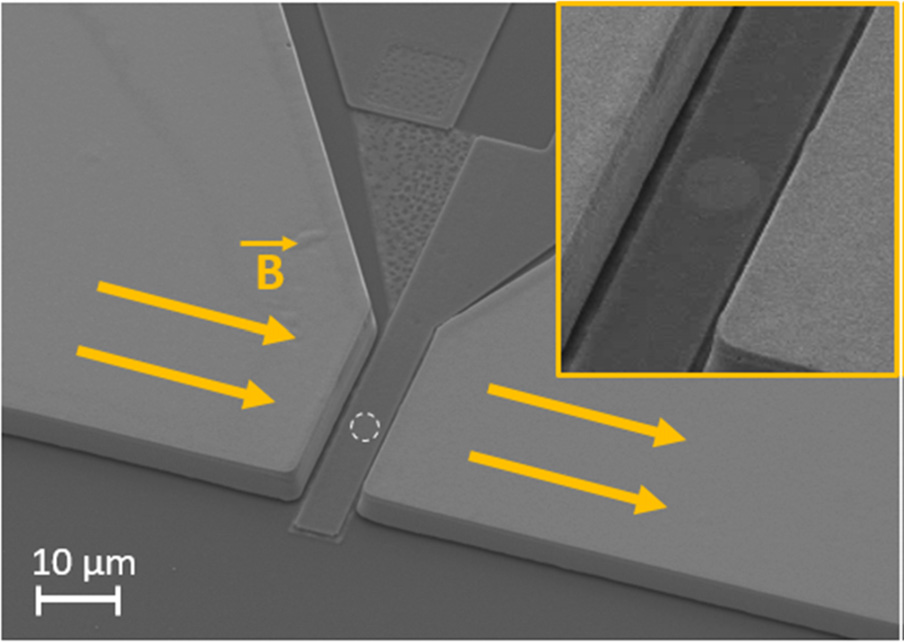The large magnetometers currently used onboard satellites for space exploration cannot be installed in the tiny nanosatellites (cubesat) that are envisioned for multipoint measurements. As a first step towards the realization of a miniature space magnetometer, Spintec has demonstrated a strong amplification of the sensitivity of a magnetic field sensor on chip.
The current magnetometers used on space missions have extremely high performances but are much too large (15 cm, 500 g) to fit within a cubesat (unit size = 1 dm3). We have reached an important step toward the realization of a miniature magnetic field sensor that could compete with these large magnetometers by developing a high gain flux concentrator that amplifies by more than two orders of magnitude the sensitivity of a magnetic sensor on chip.
Scanning electron microscope image of the flux concentrator with a circular junction within the air-gap. Inset: zoom on the junction in the air-gap.
Our aim was to improve the performances of magnetic tunnel junctions, which are already used as miniature magnetic sensors, for example as read-head in hard disk drive. Besides the enhancement of the sensitivity of the magnetic tunnel junction itself by optimizing the material properties and studying the influence of its shape, the most dramatic improvement has been obtained by designing a high gain flux concentrator. This flux guide amplifies the external field by concentrating the flux lines at the location of the junction. The design of the flux concentrator has been proposed by our partners at LPC2E, a space laboratory in Orléans. The technical realization was rather challenging since the mm-size flux concentrator is 5-7 µm thick with a 10 µm air-gap. Depositing such a thick layer could not be performed with the available deposition tools. Moreover the spacing between the two structures (10 µm) is comparable to their thickness. To overcome this difficulties, we developped an electrochemical deposition technique on a dedicated bench in the PTA clean-room. The soft ferromagnetic material is deposited in a thick resist mold on a metallic seed layer. The flux concentrator is placed around the junction (see figure) and allows for a field amplification by a factor of 440. This very large gain compares advantageously with single-stage flux concentrators developped by other groups that show amplification by a factor 10 to 100.
The demonstration of this large amplification is an important step toward the realization of a miniature magnetic field sensor with high performances that could also have bio-medical applications. It has attracted the interest of the French magnetic community and given rise to new collaborations with academic and industrial partners.
Team: Magnetic Sensors
Collaboration: LPC2E, CNRS-Orléans
Funding: CNES & ANR-Marot
Further reading: Large amplification of the sensitivity of symmetric-response magnetic tunnel junctions with a high gain flux concentrator, S. Manceau, T. Brun, J. Fischer, C. Ducruet, P. Sabon, C. Cavoit, G. Jannet, J-L. Pinçon, I. L. Prejbeanu, M. Kretzschmar, C. Baraduc, Appl. Phys. Lett. 123, 082405 (2023). Open access: hal-04194941v1
Contacts: Clair Baraduc, Philippe Sabon

